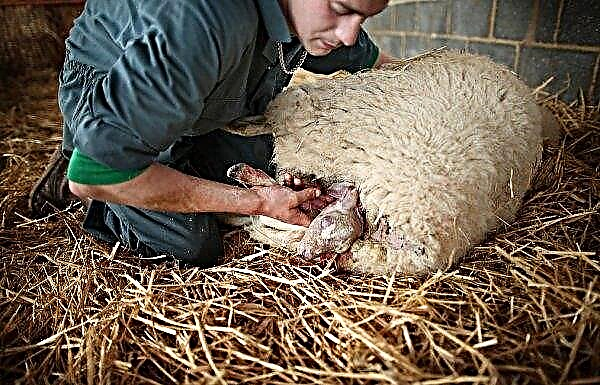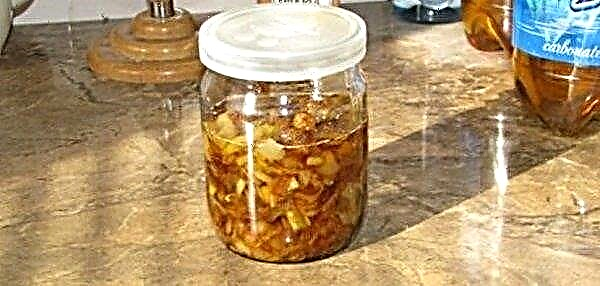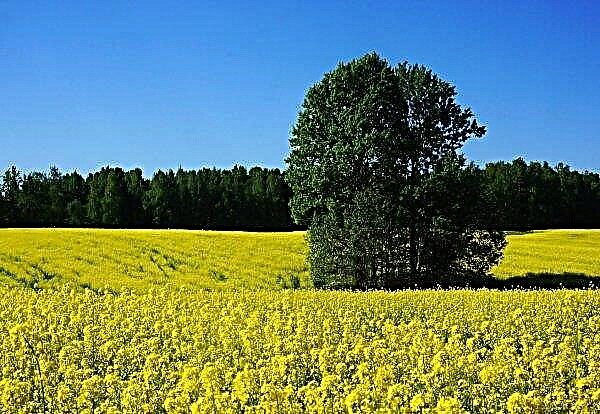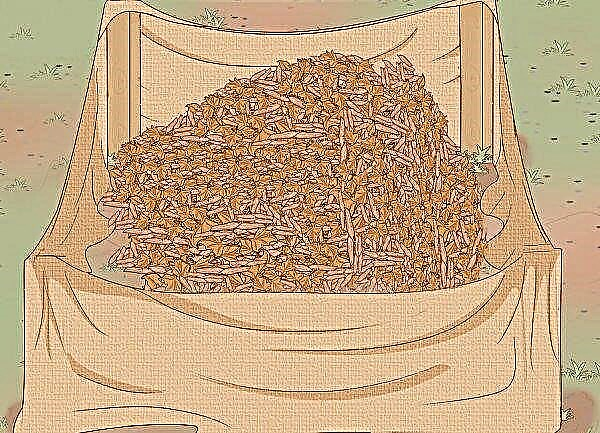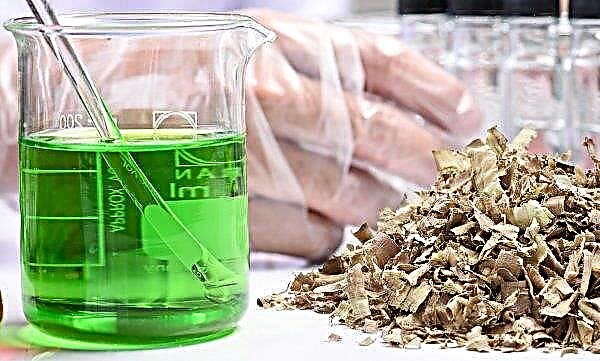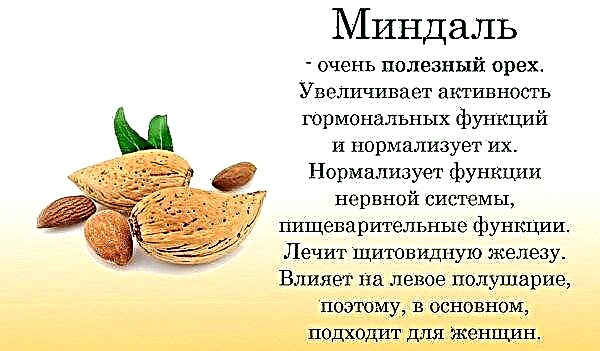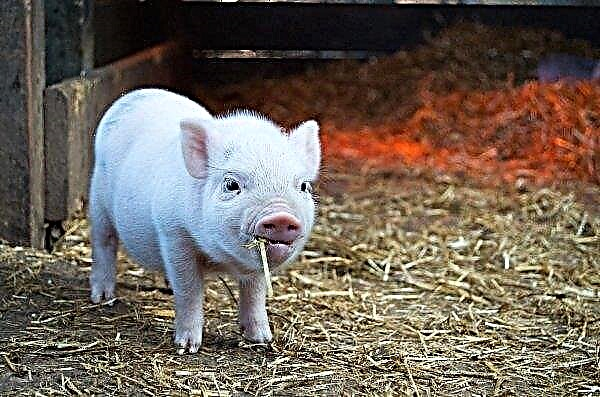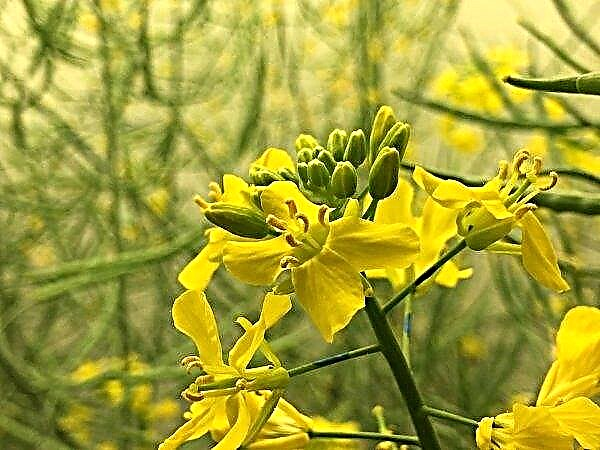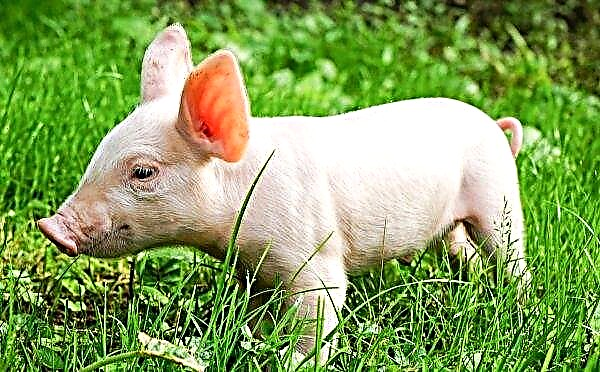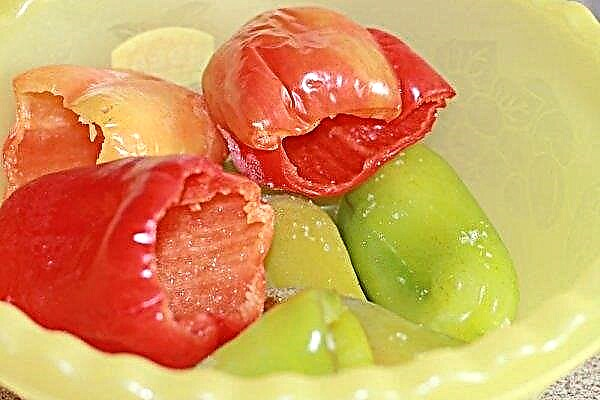Panicle hydrangea has long and deservedly won the hearts of gardeners. The shrub has beautiful lush inflorescences, which for a long time delight with their appearance. In addition, most varieties tolerate frosty winters and are unpretentious. One of these is Hydrangea Paniculata Summer Love.
Botanical Description
Hydrangea Summer Love is perhaps one of the most beautiful varieties of this species. It is a compact shrub up to 1 meter high. The location of the roots is superficial, they absorb moisture well and therefore hydrangea grows quite quickly. Bloom Summer Love (this is how the name of the variety is translated) can already in the first season after planting. Especially if the seedling and plot are selected correctly and the plant is planted in accordance with the recommendations.
Flowers of white and pink hues are combined in lush bunches 30–35 cm long. The shape of the inflorescences is spherical or conical. At the time of flowering, with proper care, foliage is almost invisible from under delicate brushes. The flowering period is from July to the end of September. The crown shape is dense, spherical, shoots are strong, leaves are dark green in color. The variety, although it is considered undersized, but there is evidence that in favorable climatic conditions the bush can grow up to 2 m.It is characterized by high winter hardiness, up to -35 ° C, endurance and unpretentiousness.
Landing
Planting panicle hydrangea should not cause you any difficulties, especially if you have already planted any other garden shrub. The procedure is simple, and consists of the most common steps inherent in the planting of all other similar plants.
Did you know? Translated from Latin, Hydrangea means "a vessel with water", which perfectly characterizes the moisture loving nature of the plant. Japanese name Adzisai translated
Landing time
In the south, Summer Love is planted in mid-autumn (first half of October), in all other regions - in early April. Dates may vary slightly, sometimes it happens that the right time for the procedure has come in the second half of March. Perhaps the soil and air really get warm enough, but there is a high probability of return frosts, from which a young seedling will suffer.
Site selection and soil preparation
Summer Love, like most other varieties of hydrangea, needs a lot of sunlight, although it also tolerates some shading quite normally.
Of the other criteria that you should pay attention to when choosing a site for landing, we can distinguish the following:
- rather fertile loose soil with good moisture conductivity and a slight acid reaction (pH 4.5–5.5), preferably loam;
- protection from winds, especially northerly;
- it is desirable that the place is on an elevation or slope;
- occurrence of groundwater - not closer than 1.5 m to the surface of the earth.

Before planting the plant, the site should be dug up well, large clods should be broken up. In the event that the substrate in your garden is calcium (alkaline), it should be acidified.
There are plenty of options for doing this, here are just a few of them:
- when digging, make coniferous litter (for spring planting this is done in the fall, and vice versa), sphagnum moss, peat or mullein (1 bucket per 1 m²);
- potassium sulfate or ammonium sulfate (35–40 g / 1 m² each);
- citric acid (3 tsp / 2 buckets of water / 1 m²);
- 9% table vinegar (1 cup / 2 buckets of water / 1 m²).

Landing algorithm
Before planting hydrangea, it is necessary to prepare a fertile substrate consisting of such components:
- turf - 2 parts;
- peat - 1 hour;
- sand - 1 hour;
- humus - 2 hours
Combine all the ingredients and mix well, adding 2 tbsp of mixture to each bucket. l superphosphate.
Did you know? Hydrangea loves acidic clay soils, and can draw from them aluminum, which is rich in such soils. This mineral, in turn, gives a bluish or lilac hue to the flowers of the plant.
Next, proceed as follows:
- At the chosen site, dig planting pits with a depth of 50 cm and a width of 30–35 cm. If you are planting several plants, maintain a distance of about 1 meter between adjacent bushes (0.8 m for hedges).
- Place a layer of drainage (crushed stone, sand, crushed brick in approximately equal parts) at a depth of 15–20 cm at the bottom of each pit. Lay a slide of the substrate prepared by you so high that the root neck of the seedling placed on it is slightly higher than the ground level. All the above manipulations are best done a week before the planned landing date, but it is possible immediately before the procedure itself.
- Place the seedling in the center of the pit, spread its roots, cover it with a fertile substrate, slightly tamping.
- At a distance of 35–40 cm from the seedling, construct a shaft 12–15 cm high in a circle - this will be a trunk circle.
- Pour the plant with 1.5-2 buckets of warm water and mulch the trunk circle with a mixture of needles, pine sawdust and peat.

Care
If you correctly completed all the hydrangea planting activities, further care for it will require the least possible effort. All of them are simple and do not require special knowledge and skills.
Watering and feeding
A young plant immediately after planting is watered often - 1-2 times a week, one bucket of water. In the future, when hydrangea grows, irrigation is carried out with the same frequency, but with a large volume - 2-3 buckets per bush. These rates are for warm seasons with normal rainfall.

In the event that there is a dry summer, the number of hydration procedures is increased to 2-3 times a week. After each watering, the soil in the near-stem circle is loosened and weeds are removed. If you planted a plant with fertilizer, it is not fed in the first season.
Important! Nitrogen fertilizers should not be applied after the first decade of July, since this mineral stimulates the growth of shoots. Young shoots may not have time to get stronger before the end of autumn, and as a result will suffer from frost.
Further, minerals and organics are introduced according to this scheme:
- March, April. Complex or nitrogen fertilizers (potassium or calcium nitrate - 30 g / 1 m²). It is advisable to alternate the type of top dressing - in a year add minerals and organic matter (a solution of mullein or poultry manure. Dilute 1 kg of excrement in 10 liters of water, infuse for 2 weeks. Dilute one liter of the resulting infusion in a bucket of water and water the trunk circle). In addition, it does not hurt to scatter around each plant 2 tbsp. nitroammophoski.
- June July. The time of potash-phosphorus fertilizing. Suitable potassium salt, superphosphate, potassium sulfate (2 tbsp. L. / 1 plant).
- October. Nitroammofoska (2 tbsp. L / 1 bush).

In addition to these top dressings, during the summer, the crown of the plant should be periodically sprayed from the spray with a pink solution of potassium permanganate - for better and more abundant flowering.
Mulching
Mulch the trunk circle is necessary to better retain moisture, as well as to suppress the growth of weed grass. In addition, mulch contributes to a better wintering of the plant, being an excellent thermal insulation, preserving, in addition, a supply of water in the soil, avoiding icing. As a mulch, it is best to use sawdust (pine will work well), needles, peat or a mixture of them in arbitrary proportions . The thickness of the usual layer of mulch is 8–10 cm; in winter they make a more powerful shelter (12–15 cm).
Pruning
Summer Love, in principle, can not be pruned, but in this case the shrub will lose its decorativeness over time. In addition, the risk of developing diseases increases.
Pruning is of the following types:
- formative;
- sanitary;
- stimulating (regulatory);
- anti-aging.
The sanitary procedure is performed in the spring, before the start of sap flow, or in the fall. Formative and stimulating pruning is done in spring, since the autumn operation causes an active growth of shoots, which should not be done during the winter, in order to avoid freezing.
Summer Love can be pruned after the first wintering if the shrub was planted in the fall. Around mid-March, sharply ground pruners remove all dry, frostbitten and diseased branches. The shoots affected by frost are cut to healthy tissues. Then, the plant should be stimulated to flowering abundantly. To do this, cut off all young shoots by about 1/3 of the length. The final touch is the formative procedure.
Important! After trimming of any type, all places of cuts should be treated with garden varieties, regardless of whether they are thin shoots or thick branches. In addition, the tool must be sharp and sanitized.
It will be described in more detail, the operation is quite simple, perform it this way:
- In the first year, hydrangea is not touched, it needs to be allowed to grow and take root.
- In early spring, for the second season, all last year's shoots are almost completely removed. They do this in order to form a strong skeleton near the bush.
- A year later, the shoots are cut again, but this time you need to leave longer “stumps”. Each such process should have 2-3 kidneys.
- Those shoots that grow inside the bush should be removed in any case, regardless of whether there are buds on them. This operation contributes to thinning of the crown, which improves air access inside and reduces its humidity, which is a favorable environment for the development of fungal diseases.

In the future, during a sanitary event in the fall, all inflorescences of the current season are removed, since they, combined with the weight of the snow, can lead to damage to the branches of the shrub. You can rejuvenate hydrangea for 6-7 years of life.
To do this, proceed as follows:
- Remove all old shoots that impede young growth.
- All branches of four years and older are removed under the root. After the procedure, the bush should have 7–9 strongest and healthiest branches, this will be enough.

Winter preparations
Although Summer Love is a fairly frost-resistant variety, it is better to cover young plants for the winter. To do this, carry out abundant pre-winter watering (5-7 buckets per bush), after which they cover the circle with a thick layer of fresh mulch. The bush is insulated with spruce branches, on top - with a non-woven fabric such as spunbond. As an adult hydrangea, winter mulching is usually enough for mulching - it normally tolerates winters typical for most regions of Russia, in which it is recommended for cultivation.
Breeding methods
There are 4 main ways to reproduce hydrangeas Summer Love. Thanks to them, you can increase the number of plants in your own garden, if you have already grown at least one adult shrub.
Cuttings. The most popular method due to its efficiency and simplicity. Of the shortcomings, it should be said only about the sufficient duration of the procedure.
The method is as follows:
- In spring, cuttings are harvested by cutting shoots in such a way that 3-5 buds are on each. Seedlings are treated with a growth stimulator such as "Kornevin", "Epin" or heteroauxin.
- After a day, the cuttings are planted in a prepared substrate, dug up and well fertilized (30 g of ammonium sulfate or potassium sulfate / 1 m² each). Seedlings are covered with a film and periodically moisturized.
- In winter, the cuttings are covered with spruce branches, and in the spring the peduncles formed are removed. Young growth is transplanted to a permanent place after 3-4 years.
Layering. The simplest hydrangea dilution method is as follows:
- In early spring, on the mother plant, choose the lower branch, which will give layering. Part of the bark is removed and this area is instilled, securing it with wire staples.
- It is better to sprinkle the “branch” branch with a fertile substrate, consisting of equal volumes of peat, humus and turf with the addition of 60–70 g of superphosphate per 5 l of the mixture.
- A place sprinkled with soil is regularly moistened, and covered with a spruce for winter. In March-April, cuttings are carefully separated from the parent plant and transplanted to a new place.
By dividing the bush. The method of reproduction is simple, but at the same time it is practiced only for young plants, since hydrangea is a fast-growing species, and it is quite problematic to divide an adult bush.
The division is performed in the spring, if necessary, then together with a hydrangea transplant:
- Summer Love is abundantly watered, then gently dug up. Excess soil is removed from the roots, after which the bush is laid on a flat surface.
- A well-sharpened shovel or ax divides the bush in the root area so that several divisions are obtained, each of which will leave 3-4 strong shoots.
- The resulting divisions root as the most common seedlings and take care of them in the same way.

Overgrown. If the conditions for the cultivation of Summer Love are favorable (they correctly perform moisturizing, make fertilizing, etc.), then young growth will soon appear around the shrub. These shoots can be used for breeding Summer Love.
The operation is performed as follows:
- In the fall, during the pre-winter garden work (or when trimming), the shoot is carefully dug up and separated from the parent plant.
- The resulting sapling is rooted in a new place, moisturized abundantly, covered with pine branches for the winter.

Landscape design application
Hydrangea Paniculata has long been considered a plant with exceptional decorative qualities, but even against the background of other varieties Summer Love stands out for its appearance. The compact size, the abundance of color, which also changes colors, the remarkable winter hardiness and endurance - thanks to these and many other qualities, Summer Love has found a lot of fans among gardeners. The shrub can be grown as a solitaire and in group compositions.
Here are just some of the solutions where it will look great:
- rock garden;
- a small Japanese garden;
- heather garden;
- retaining wall;
- hedge;
- as the central object of the composition in combination with dwarf conifers (thuja, fir, etc.);
- in a group planting around a high coniferous tree (fir, spruce, pine, cedar, etc.);
- for growing in flowerpots;
- goes well with lilacs, plants with burgundy foliage shades, with most traditional garden flowers.

Thanks to the dense beautiful color, the variety can be considered one of the best elements for hedges. White and shades of pink are perfectly combined with any color, and the universal size of the lush crown makes it possible to use the bush in almost any combination. It can be said that Summer Love provides an unlimited field of activity for your imagination.
Diseases and Pests
The variety is resistant to various diseases and pest attacks, especially when performing preventive measures, among which the following should be highlighted:
- timely application of fertilizers (top dressing increases the immunity of the plant and it is easier for him to prevent the development of diseases);
- proper irrigation (hydrangea should not be over-filled to avoid moisture stagnation);
- regular sanitary pruning (excessively thick foliage is favorable soil for the development of diseases and the appearance of pests).
If, nevertheless, at some point you find signs of an ailment, then most likely it will be fungal diseases, such as:
- spotting;
- gray rot:
- powdery mildew, etc.

To combat such diseases, fungicides are used:
- Bordeaux liquid;
- "Topaz";
- "Speed";
- Fitosporin-B.

These drugs are used according to the instructions. The listed funds are quite effective against fungal diseases, but it should be said that such ailments are easier to prevent by performing the above preventive measures than to treat the plant later.
Among the pests that can pose a threat to the plant, first of all, it is necessary to say about such insects:
- aphid;
- spider mite;
- leaflet and others

In the fight against them, the best defense is an attack, or rather, a warning. Since spring, it is necessary to treat the shrub with any available insecticide, if necessary, fix the result by repeating the procedure in 2-3 weeks.
In the event that pests were still found, you should use these drugs:
- "Actellicus";
- "Spark";
- Fitoverm;
- solutions of ash, ammonia, baking soda with laundry soap, etc.
Panicled Hydrangea Summer Love is able to decorate with itself a small garden and a spacious city park or square. The plant is suitable for cultivation in simple amateur plantings and for use in conceptual compositions by professional landscape designers. Add to these qualities the unpretentiousness of Summer Love and its frost resistance, and you will understand the reasons for the popularity of the variety.

